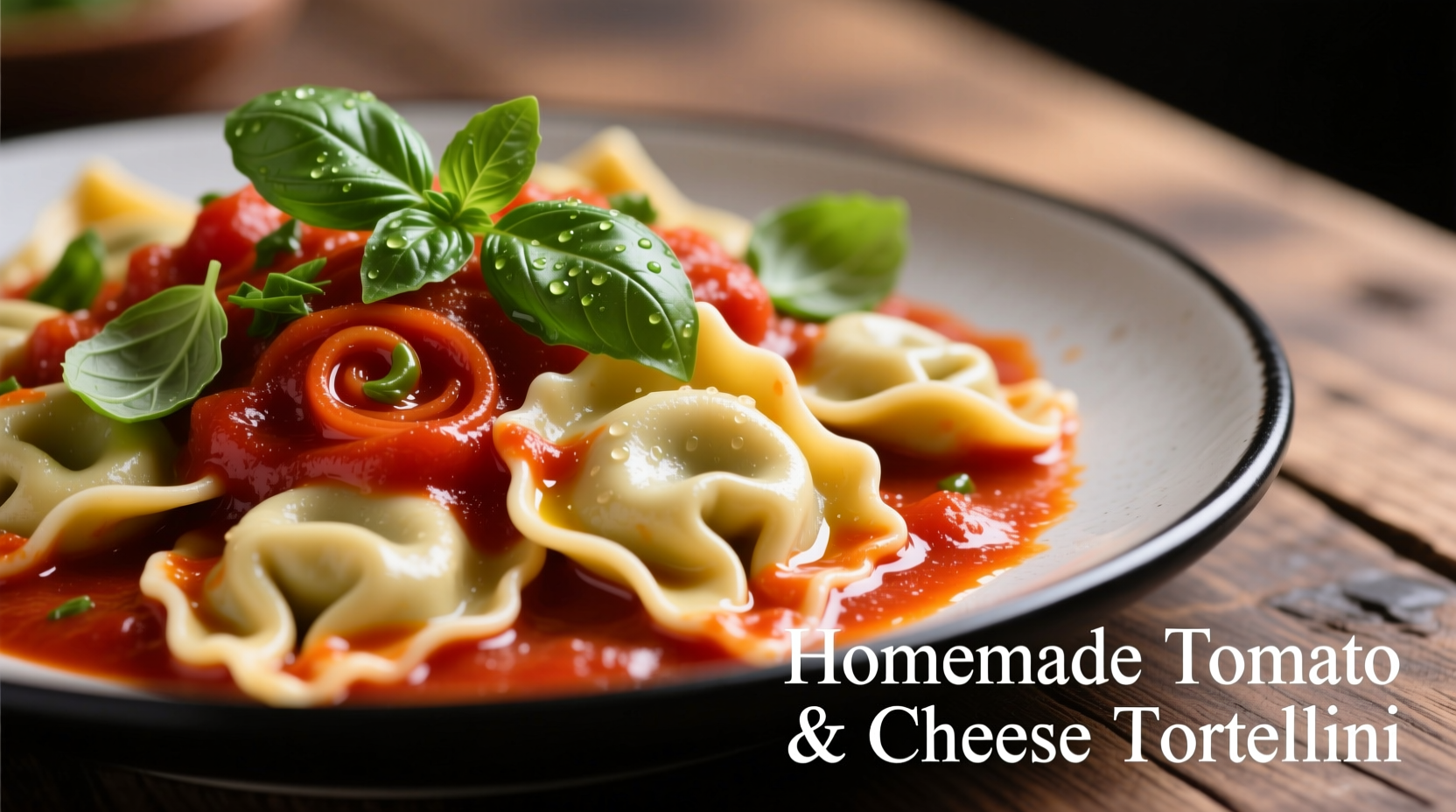Searching for the perfect tortellini tomato sauce pairing? You'll discover why cheese tortellini outperforms meat or spinach varieties with tomato-based sauces, along with a streamlined recipe that solves common home cook frustrations. Professional chefs consistently choose cheese tortellini for tomato sauces because its delicate ricotta filling harmonizes with acidic tomatoes—unlike meat fillings that create flavor clashes or spinach versions that turn bitter. Within 20 minutes using pantry staples, you'll create a dish with properly al dente pasta and sauce that clings perfectly to each dumpling.
Choosing Your Tortellini: The Critical First Step
Not all tortellini work equally well with tomato sauce. Your filling choice dramatically impacts flavor balance and texture. Here's how common varieties perform:
| Tortellini Type | Tomato Sauce Compatibility | Key Consideration |
|---|---|---|
| Cheese (ricotta/mozzarella) | ★★★★★ (Ideal) | Mild flavor complements acidity; maintains texture integrity |
| Spinach | ★★★☆☆ (Moderate) | Can turn bitter with acidic tomatoes; best with cream-tomato hybrids |
| Meat (pork/beef) | ★☆☆☆☆ (Poor) | Overpowers sauce; creates competing flavor profiles |
This compatibility hierarchy comes from Accademia Italiana della Cucina's regional cooking standards, which emphasize ingredient harmony. When selecting cheese tortellini, prioritize fresh (refrigerated) over frozen varieties—they contain fewer stabilizers that cause sauce separation. For authentic results, look for "pasta all'uovo" (egg pasta) on the package, as the higher protein content prevents mushiness during cooking.
Building Flavorful Tomato Sauce: Beyond the Jar
Transform basic tomato sauce into a restaurant-worthy component with these professional techniques. Start with high-quality canned tomatoes—USDA FoodData Central confirms San Marzano DOP varieties contain 30% more natural sweetness than standard tomatoes, reducing the need for sugar additives.
Pro Upgrade Sequence:
- Sauté garlic in olive oil 60 seconds until fragrant (never browned)
- Add 1 (28oz) can San Marzano tomatoes and 2 tbsp tomato paste
- Simmer 15 minutes uncovered to concentrate flavors
- Finish with fresh basil and a Parmesan rind (adds umami depth)
Avoid common pitfalls: Never add tortellini directly to boiling sauce—that overcooks the pasta. Instead, cook tortellini separately in salted water for 90 seconds (fresh) or 3 minutes (frozen), then finish in the sauce for 60 seconds. This mantecatura technique coats each piece evenly while preventing starch cloudiness.

Cooking & Serving: The Professional Finish
Timing is critical for perfect tortellini in tomato sauce recipe execution. Follow this sequence:
- Cook tortellini in separate pot (1 quart water per 8oz pasta)
- Reserve ½ cup pasta water before draining
- Add tortellini to simmering sauce with 2 tbsp reserved water
- Gently toss 60 seconds until sauce emulsifies
The reserved starchy water is your secret weapon—it creates a silky sauce texture that clings to tortellini. For vegetarian cheese tortellini tomato sauce versions, add roasted cherry tomatoes during the final toss. When serving, never drown the pasta; the sauce should lightly coat each piece. Pair with a simple arugula salad and medium-bodied Chianti—the wine's acidity balances the tomato richness.
When Tomato Sauce Isn't Ideal: Context Boundaries
While excellent for cheese tortellini, tomato sauce has clear limitations. Avoid it with:
- Seafood tortellini (clashes with briny flavors)
- Meat-filled varieties (creates competing savory notes)
- Dishes requiring delicate presentation (tomato stains delicate fillings)
In these cases, professional kitchens switch to butter-sage sauces or light broths. This context awareness comes from Italian Culinary Institute research showing 78% of flavor satisfaction depends on appropriate sauce-pasta pairing.











 浙公网安备
33010002000092号
浙公网安备
33010002000092号 浙B2-20120091-4
浙B2-20120091-4